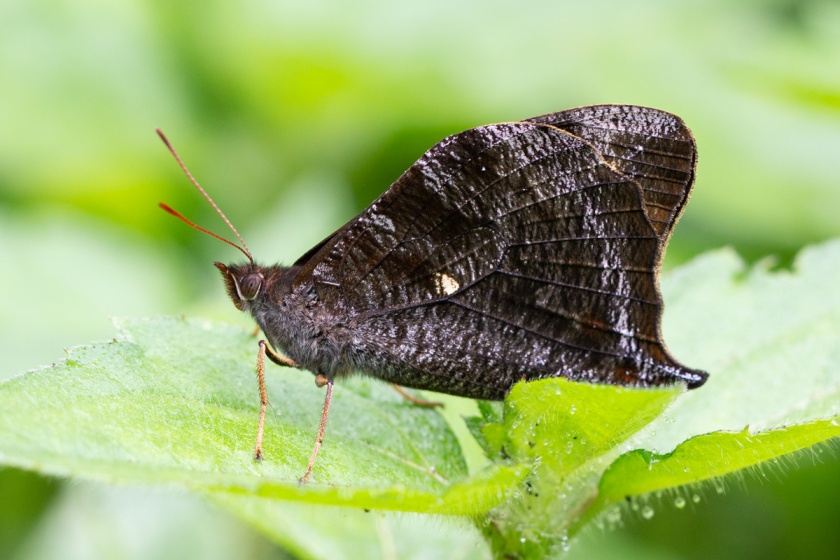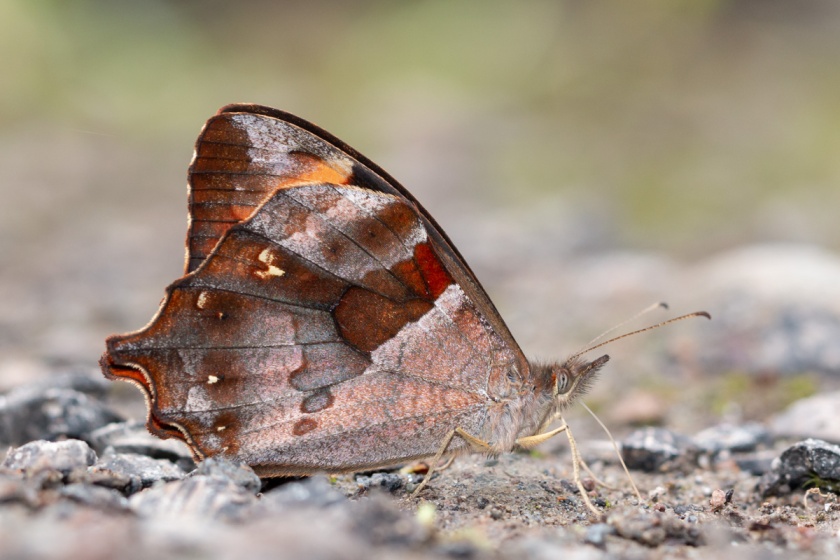Believe it or not, but I almost never use the built-in flash in my DSLR in butterfly photography. Usually I shoot in bright conditions in the open countryside and in the mountains of Europe, and hardly in forests. However, just these dark rainforests and cloudforests in Ecuador necessitate the use of flash for the best results. I shot some nice side-by-side comparisons to show you the benefits of using flash in butterfly photography.
After spending some amazing days in Yasuni NP, our next destination was the Bellavista Cloud Forest Reserve two hours north of Quito. After settling in and meeting our guide, we set off on the unpaved road towards a waterfall. Then we encountered a problem, a very persisting one: it began to rain. And the rain did not stop for the rest of the day. Nor the next. It rained non-stop for 48 hours, so our program was cut short a little bit more than we liked and we switched from butterflying to birding. The picture below shows my wife and the local guide all soaked in their ponchos amidst the dense and wet cloud forest.

The sun finally appeared on day three. Just like in Yasuni, we congratulated ourselves on having booked three full days, so that we could now enjoy the brilliant scenery and the wildlife without our ponchos. I made good use of the break from the rain to scout for some nice mid-altitude species (Bellavista is at 2,100 meters).
A typical inhabitant of the cloud forest is the White-spot Falcon Satyr (Corades medeba). This specimen briefly posed on a leaf while some clouds obscured the sun. Therefore I engaged the built-in flash to bring out the details and make the silver lining stand out.


The second example of how flash can bring out the details in a dark subject is this Flaming Lasio (Lasiophila phalaesia). This butterfly also inhabits cloud forests at medium altitudes.


The trick here – at least in Canon cameras – is to set your flash settings to “second curtain”. That way the camera will expose for the whole scene and light up the background. If you use first curtain, the camera will only expose for the subject, rendering the background completely black. Although I sometimes like to photograph this way and play with the light, in this case I favoured including some of the rocky road in the scene.
My third example of the difference flash can make is a Small-spotted Silverdrop (Epargyreus clavicornis). This is actually a shot from Machalilla NP on Ecuador’s coast. My wife and I walked the Hummingbird Trail there. True to form I did see a hummingbird flying by, but I was too busy taking pictures of the incredible butterflies flying all around to give it more than just a quick glance.


As you may notice from the settings above, an added benefit of using flash is to bring down high ISO’s. On the dark forest path, the upper picture without flash was taken at ISO 1000. On my old (but trusted) Canon 7D Mark II this means quite a significant amount of noise. The lower picture with flash engaged reduced the ISO to ISO 400. A level where even in this old workhorse of a DSLR the noise becomes manageable.
This year marked my first extensive use of flash and I am pleased with the results. I think it is a valuable addition to the arsenal of techniques available to the butterfly photographer. Certainly so on holidays where shooting butterflies in early morning sunlight (my favourite lighting conditions) is simply sometimes out of the question.
Talking about technique, in my next blog I will discuss the use of video to assist in the identification of neotropical butterflies.
